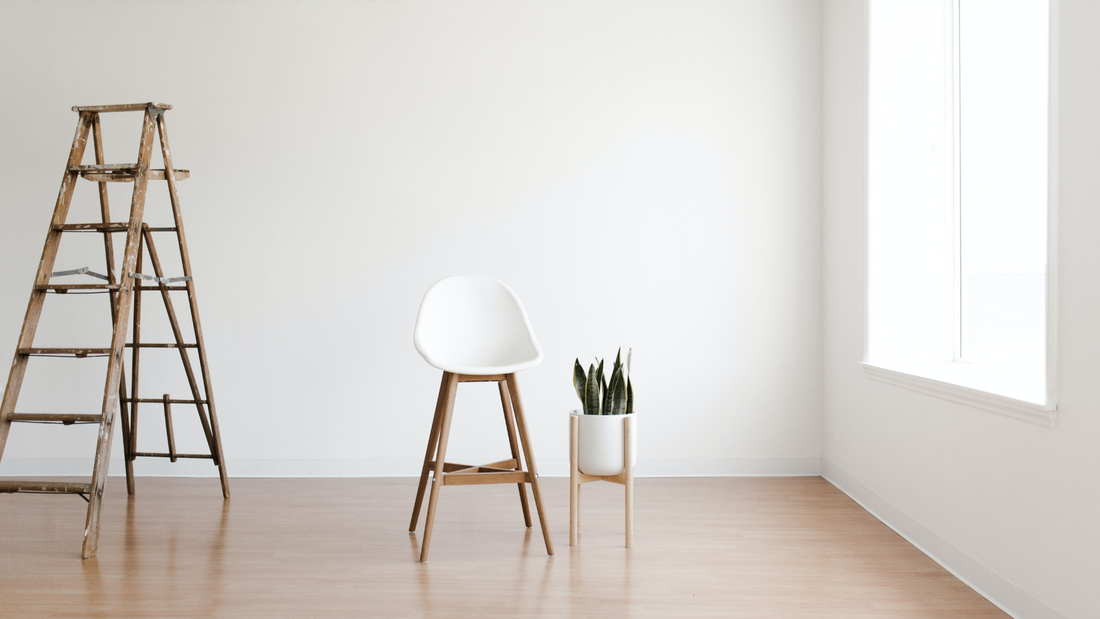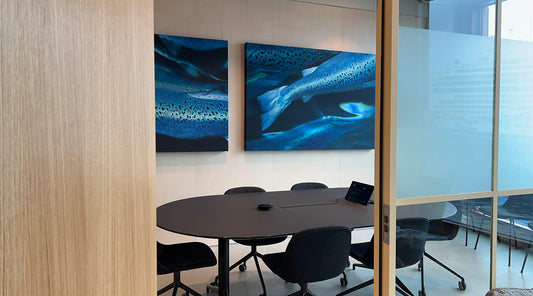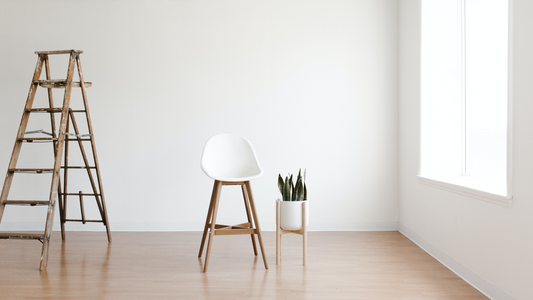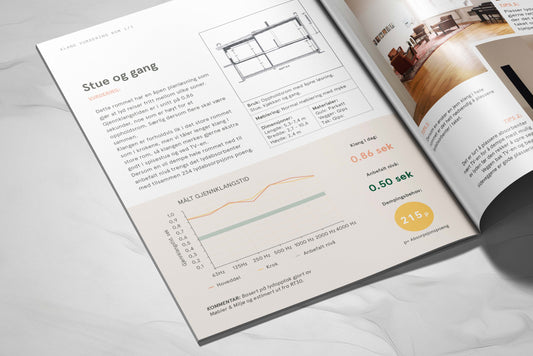
5 Misconceptions to avoid before buying sound absorbers.
Birgitte RellingShare
What's the first thing you think of that dampens sound?
Did you think of curtains, carpets or cushions perhaps? Well, you'd be right of course. Most people have a fair idea of what can absorb sound. But the devil is in the details. There are a lot of misconceptions about sound absorbers floating around, and a lot of misleading information. The term ‘sound absorbing’ is applied pretty fast and loose to many products. So you can easily end up buying something that hardly helps at all.
Wasting money on something you thought would help sucks. I’m writing this to help you avoid an expensive blunder. Here are the five misconceptions about sound absorbers I run into the most.
1. “I don’t need absorbers that are this thick. I’m sure these thinner ones will do just fine”
It's a logical conclusion that a thick sound absorber will absorb more than a thinner one. And that could easily lead you to think that if you only have a bit too much echo, you could make do with a thinner sound absorber. But that is not the case.
The misconception is linked to why a thick sound absorber is better. You see, a sound absorber won’t dampen all sounds the same.
Imagine a piano. The key on your far left will give you a low bass tone, while the one to the far right will produce a seriously high note. The high notes can be dampened by regular curtains or a carpet on the floor. But the lower the tone gets, the thicker the sound absorber needs to be to have an effect.
A thicker sound absorber is better because it absorbs a wider spectrum of sounds. And if you want a room that sounds good you need to reduce all sounds, preferably the same. If you choose a sound absorber that is too thin, you'll dampen the high tones, while the bass still roams freely. You could actually make the room sound worse than it was..
2. Blinds
I once helped a training studio. They were fed up with the noise during intense sessions like Bodyjam and Step. They bought blinds to reduce the echo but hardly noticed the difference. They were frustrated. The salesperson had told them that the blinds would absorb 20% of the sound. Even if that’s true, sound absorption of 20% is not much to brag about. And second of all, that was most likely only true for the highest tones. Not for the loud base tones of the music they played during sessions.
I often see vertical blinds described as sound-absorbing. And they do absorb sound, but only a little. The only blinds I’ve seen that absorbed sound well was about 2cm thick and hung 10cm out from the window.
If you’re buying blinds to keep the sun out of your eyes, then great, it will do that! But if you're buying them in the hope of reducing echo, then I'm afraid you´ll be disappointed.
3. “I'm sure it’ll get better once we hang some photos”
I hear this all the time. Unfortunately, it probably won't. Photos in glass frames reflect sound just as well as the wall they’re hanging on. And even if you use a canvas photo, it won't absorb much.
Next, I’m often asked ‘what if I put a sound-absorbing mat behind the canvas?’ Well - and this is going to sound strange - but try blowing through it. If you can’t feel the air flowing through on the other side, then a soundwave won't be able to pass through either. So there’s no point in having a sound-absorbing matt behind it.
But if you can blow through the canvas then sound will also pass through and into the absorber behind. For our sound absorber Picture Wall, we use a fine polyester knit to print the photo on. The textile will give great photo quality, and at the same time, it is open so sound can pass through and into the absorber behind it.
4. Quantity
I once received an order for one small Basic Wall sound absorber. My ‘to-list’ was pretty long that day, so without thinking too much about it I sent the order straight to production. Later on, I found it strange that someone ordered just one little element. I decided to call the customer and check if they were happy with the product.
The customer laughingly told me that she intended to check if it worked. It wasn't until she was standing there holding this one tiny sound absorber, that she realized that one absorber alone wouldn't reduce the echo enough for her to notice the effect.
Guessing how many sound absorbers you need to reduce the echo is difficult. Even for me. I prefer to know the reverberation time of the room and its size of it so I can calculate what it will take. That eliminates the guesswork.
5. Acoustic wooden slats
We see these everywhere. They’re a common feature in architect-designed projects. We associate them with great acoustics. So, what could go wrong?
The worst example I’ve seen was a home using wood slat panels as sound absorbers. So. Many. Slats. The owner of the house went all in. They covered their entire kitchen and living room. All the walls and even the ceiling! They were determined to get rid of the echo. To their great frustration - nothing changed. The echo remained unaffected. So how’s that possible?
Here’s how. There was no insulation or sound-absorbing matt behind the slat panels. Insulation is essential if you want the slat panels to work. Behind the panels, there's around 5-30cm of insulation. The insulation absorbs low frequencies while the slats make the room sound livelier by reflecting and spreading the higher frequencies.
A good example of wooden slat panels being used effectively is a restaurant for example. In that situation, you want to remove the louder noises so that the room is calmer but you want to retain some of the liveliness. Ideally, a pleasant combination of conversations, laughter and the ability to have a private conversation without feeling like the whole room can hear you.
This type of acoustic atmosphere can also work at home. Just remember; Without a good sound absorber behind the panel, the wooden slats alone will spread the noise outwards but otherwise have no effect on the noise in the room.
Your room evaluation will tell you what our space needs.
Being aware of the most common traps to avoid is a good step in the right direction to getting rid of the echo. After helping people reduce echo for 10 years, I know how frustrating too much echo can be. And I also know how difficult it is if you don't know where to start.
The uncertainty can make you wait to take action til you've lived with the echo for years.
And I get it. I'm no fan of giving general advice if I don't know enough about the room in question. I really don't like guessing. That's why we offer a free room evaluation. If you're wondering what it will take for your room to sound good, the room evaluation is a great place to start.



